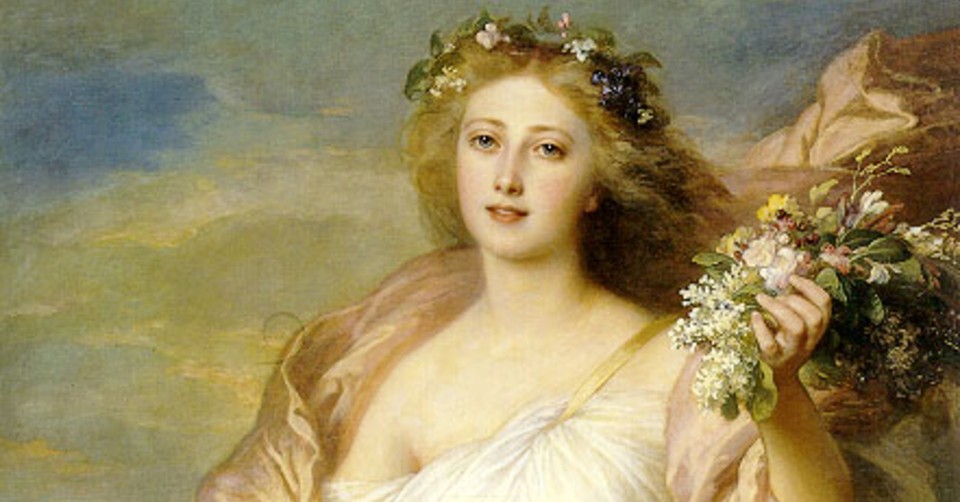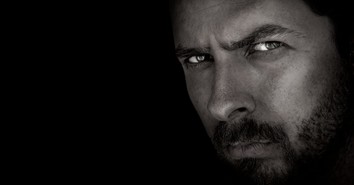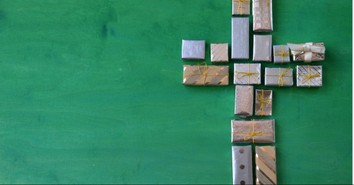Who Is Eostre and What Does She Have to Do With Easter?

Many Christian holidays often can have ties to pagan holidays. Halloween, for instance, often tied in with All Saints Day, has connections with the holiday Samhain, a pagan celebration that dates as far back as the time of Jesus and perhaps even further back. Valentine's Day also has roots in a Roman celebration of sexual love in which participants would engage in grotesque and very much beyond PG-13 revelries, including acts of violence in something known as Lupercalia.
Even Christmas trees, mistletoe, presents, and ornaments have roots in pagan religions, so it shouldn’t come as much of a surprise to us that elements of the holiday Easter have roots in religions other than Christianity.
You may have wondered where the Easter bunny came from and felt a cognitive dissonance between why children collect eggs and receive Easter baskets on Easter morning and we go to church the same day and celebrate Jesus Christ’s resurrections and victory over death (Mark 16:5-7). If you’ve mused about how the two traditions wound up in one holiday, you may have guessed it: Christians borrowed some elements from pagan celebrations and incorporated them into Easter celebrations. Most importantly, we borrowed a great deal of the egg collecting and Easter bunny traditions from a pagan goddess known as Eostre.
Before we ditch our eggs we like to dip-dye and rid our household of any stuffed animal bunnies, let’s discuss the origin of some of these pagan roots in the holiday, and see if we can find ways to redeem some of the aspects of Eostre, just like previous members of the Church found ways to incorporate one holiday into another.
Get your FREE Easter Guide here. Have encouragement delivered straight to your inbox!
Who is Eostre?
First of all, who is Eostre?
No doubt, her name sounds similar to Easter, which can play into where we got the original root of the word for the holiday, but who exactly is this goddess of pagan myth?
Depending on which historians you read, we have differing accounts as to which culture this goddess (and the origin of the Easter bunny and eggs originated). We’ll first dive into the facts we know about Eostre and discuss the possible cultural influences later.
Eostre has been associated with fertility, spring, flowers, many elements in which we associate with Easter and the season after a barren winter.
This goddess also goes by the names “Ostara” and “Eastre.” She even has a month named after her, as stated by Charlemange, in 1400s Germany called “Ostaramonath.”
As for Eostre’s origins, we have various conjectures as to when and where she first originated. She has strong ties to Anglo-Saxon religions and myths, but we don’t see her name actually show up in literature until the 1200s, in a document by Venerable Bede.
She also has links to Germany, Norse mythology, and some have said that even the goddess Ishtar, whose statues are often wrapped in eggs, influenced this goddess’ traits or may have been a forerunner of her. Ishtar, after all, was known for being a fertility goddess.
And springtime is often associated with new life and fertility, so it makes sense why religions would hold celebrations surrounding this goddess.
Is Eostre the True Easter Bunny?
Because of our lack of written sources until Bede, who would’ve been adverse to covering in depth any pagan rituals or ideas, we don’t know a whole lot of consistent information about this goddess.
As for the bunny symbolism, Eostre typically has the animal symbol of a bunny or rabbit, animals known for breeding and producing lots of offspring. Eggs were also a symbol of fertility; as seen on many depictions of the goddess Ishtar, egg symbols for rebirth date far back into the Old Testament time frame.
What Does Eostre have to do with Easter?
We may take a look at the description of the goddess above and wonder how she got mixed up in the Christian celebration of Jesus’ resurrection. What Eostre has to do with Easter is that both holidays were celebrated around the same time: Spring.
Easter, according to Scripture, falls around the time of Passover (Matthew 26:2), and Passover tends to happen very close to when Easter occurs. In this year, for instance, Passover happens on April 15-23, and we celebrate Easter this year on 17.
The church likely saw both holidays happening at the same time, and decided, like with Lupercalia and Samhain, to try and blend the two in a way to eliminate tensions between those of other religions and form a bridge between the two to spark a curiosity in the Christian holiday.
Eostre also has connections with symbols such as new life, which can easily be tied into the Easter story of Christ’s resurrection granting us rebirth and new life in him (2 Corinthians 5:17).
Are the Easter Symbols Originally Pagan?
This question depends entirely on which symbol you are referring to. When talking about elements spoken of in the Biblical narrative such as crosses, the empty tomb, angles, etc., then no, we derive those symbols associated with Easter directly from Scripture.
But as for Easter eggs and Easter bunnies, we can find ties of those in the original pagan celebration of Eostre. We can also see Easter baskets, baskets that typically hold candies or other goodies for those who receive them, have pagan origins as well. Baskets originally were used to carry seedling offerings to the goddess Eostre.
As we can see, many of the symbols have become intertwined.
Should Christian Parents Get Rid of Easter Bunnies and Eggs?
Christians may read about the origins of the Easter bunny and Easter eggs and wonder if they should pitch the baskets this year, in order to avoid participating in something pagan.
Here are some ways we can redeem these symbols, similar to how the early church tried to marry some of the Eostre traditions with their own.
First, we can dye the eggs.
This originated in Mesopotamia where Christians would dip-dye eggs red to remind themselves of the blood of Christ. It’s a fun family activity that most can participate in, and we can remember the true meaning of Easter when we dye any of the eggs red: that Christ shed his blood for our sins.
Second, we can have Easter eggs with true Easter symbols inside.
There are certain egg kits available that have symbols that are tied into the Easter story such as the nails in Jesus’ hands (Mark 15:24-26) and a purple cloth to represent the robe they place on his back (Luke 23:11), etc. Not only do kids get candy, but they also receive visible reminders of the true meaning of the holiday.
Lastly, we can remember how the symbols of new life play an important role in the Easter story.
Rabbits and eggs both represent new life, and so does the cross and empty tomb. We can explain to our kids about how we see new life during the springtime, so we can also have an abundance of life in Christ Jesus.
Similar to many other Christian holidays, during the Middle Ages the church adopted some customs from pagan religions to make the church more inviting and bridge the space between the two worlds. Whenever we celebrate anything that doesn’t have a direct correlation to Scripture, we do have to exercise caution.
But like the Church with Eostre, the Easter bunny, and Easter eggs, we can find ways to redeem non-Christian symbols and use them as a way to direct others to the more important story: the story of how God loved us, died for us, and rose to life again, so that we may have life in Him.
Photo Credit: Wikimedia Commons/Franz Xaver Winterhalter
Hope Bolinger is an acquisitions editor at End Game Press, book editor for hire, and the author of almost 30 books. More than 1500 of her works have been featured in various publications. Check out her books at hopebolinger.com for clean books in most genres, great for adults and kids. Check out her editing profile at Reedsy.com to find out about hiring her for your next book project.
This article is part of our larger Holy Week and Easter resource library centered around the events leading up to the death and resurrection of Jesus Christ. We hope these articles help you understand the meaning and story behind important Christian holidays and dates and encourage you as you take time to reflect on all that God has done for us through his son Jesus Christ!
What is Lent? It's Meaning and Why We Celebrate
When is Lent? When Does Lent Start and End?
What is the Meaning Ash Wednesday?
What is Holy Week?
What Is the Meaning of Palm Sunday?
What is the Meaning of Holy Monday?
What is Maundy Thursday?
What Is Good Friday and Why is it Good?
Good Friday Prayer
What Does Holy Saturday Mean?
What Is the Easter?
Easter Prayers
Powerful Facts About the Cross of Jesus
Originally published March 18, 2022.







